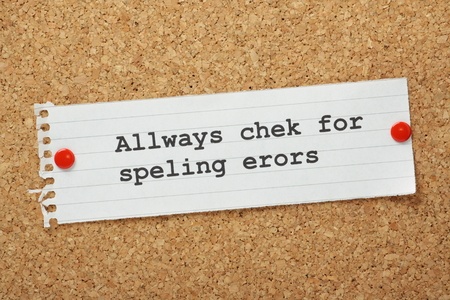My last e-letter went out with a “fig bat” – a big fat typo – in the first line. It was in the little introduction next to my photo (which doesn’t appear here in the website version). Right after “Dear [fname],” I said, “Diid you make a new year’s resolution?”
Of course I had proofread my e-letter. Because no one is good at catching his or her own mistakes, so did my proofreader. Deborah and I later joked later about how our old eyes simply never saw that double i. A reader e-mailed to point out the mistake. (Thanks, Rebecca!)
That’s not all. In this online version, you don’t see “Diid” because I don’t reproduce the little intro on my website. But you do see enhancements that Deborah suggested – and that I made – but that were not included in the version I emailed to you. Apparently I never hit Save.
Can you learn from my mistakes? I hope so. First, just don’t be dumb:
- Always proof your work.
- Always have someone else proof your work.
- Save often. Especially (duh) at the end.
- Don’t do fine work when you’re tired.
- Make one last check before you hit Send.
I’ve made most of these points before, in 6 + 6 Ways to Save Face and One Day Makes All the Difference. (Yes, I should follow my own advice – always, not just usually.)
But bad typos happen to good editors. What can you do when you send out a piece that contains mistakes? You can’t take it back (usually). But there are two things you can do.
1. Look for ways to improve your process next time.
Having a proofreader saves me from most of my idiot errors, but Deborah is no more perfect than you or I. (Well, actually, she is more perfect than I am, but she’s probably not more perfect than you are.)
What else can I do?
Here’s one thing: From now on I’ll expand my screen when I proof. Then maybe my aging eyes will be able to see two i’s in a row. I’m going to ask Deborah to do the same.
Thus, my mistake leads to a process improvement that will save me from a few more mistakes until the next mistake leads to another process improvement that will save me from a few more mistakes . . . and so on. I’ll never reach perfection, but I’ll keep getting better. So can you.
2. Let it go.
Twenty years ago, I would have spent days fretting over a mistake like this. I would have seriously considered resending the email, corrected, with an apology. I hope I wouldn’t have done it, but I would have seriously considered it.
Oh, wait, no, 20 years ago it wouldn’t have been an email newsletter.
Still, you get the idea: I would have over-corrected, causing myself extra work without any perceptible benefit to the only person who matters: you.
Now, after acknowledging the error and using it to prevent similar mistakes in the future, I’m ready to move on. If I hadn’t been able to use my mistake in the last e-letter to offer you useful advice in this one, I wouldn’t have mentioned it.
Most people probably even didn’t notice my Diid. Did you? If so, how many brownie points would you like?


